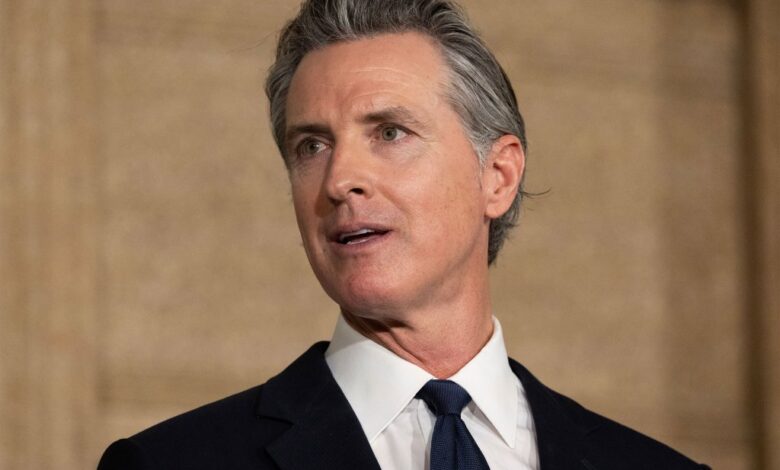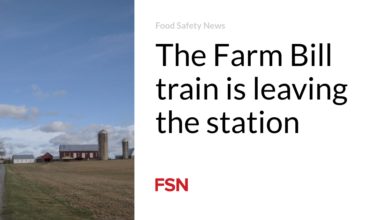Newsom Boosted California’s Public Health Budget During Covid. Now He Wants To Cut It.

When a doctor in Pasadena, California, reported in October that a hospital patient was exhibiting classic symptoms of dengue fever, such as vomiting, a rash, and bone and joint pain, local disease investigators snapped into action.
The mosquito-borne virus is common in places like Southeast Asia, East Africa, and Latin America, and when Americans contract the disease it is usually while traveling. But in this case, the patient hadn’t left California.
Epidemiologists and public health nurses visited 175 households to conduct blood draws and local pest control workers began fumigating the patient’s neighborhood. In the process, they discovered a second infected person who hadn’t traveled.
Both patients recovered, and in that neighborhood nearly 65% of the carrier mosquitoes, part of a genus called Aedes, were eradicated within seven days, said Matthew Feaster, an epidemiologist with the Pasadena Public Health Department.
The swift and intensive response was funded largely by a new bucket of money in the state budget for public health and preparedness across California, said Manuel Carmona, Pasadena’s deputy director of public health.
In the midst of the covid-19 pandemic, and facing pleas from public health officials who said they didn’t have enough resources to track and contain the disease, California Gov. Gavin Newsom had agreed to allocate $300 million each year for the state’s chronically underfunded public health system.
Two years after the money started to flow, and facing a $45 billion deficit, the second-term Democratic governor proposes to slash the funding entirely.
“This is a huge step backwards,” said Kat DeBurgh, executive director of the Health Officers Association of California. “We can’t go back to where we were before the pandemic. That future looks very scary.”
Email Sign-Up
Subscribe to KFF Health News’ free Morning Briefing.
Michelle Gibbons, executive director of the County Health Executives Association of California, said about 900 public health workers have already been hired with the new funding — including some of Pasadena’s disease investigators — positions that are at risk should Newsom prevail.
The governor unveiled his updated budget plan for the 2024-25 fiscal year on May 10, saying it pained him to push such deep cuts to health and human services but that the state needed to make “difficult decisions” to balance its budget. Unlike the federal government, it cannot operate on a deficit.
Tense budget negotiations are underway between Newsom and the leaders of the state Senate and Assembly, who must reach an agreement on the state’s estimated $288 billion budget by June 15.
“We have a shortfall. We have to be sober about the reality, what our priorities are,” Newsom said after unveiling his suggested cuts. “This is a program that we wish we could continue to absorb and afford.”
Public health officials lobbied Newsom hard in 2020 and 2021 to get more resources, and secured additional annual funding of $100 million for the state Department of Public Health and $200 million for the 61 local health departments that form the backbone of California’s public health system.
Now they are fighting to preserve their funding — just as cities and counties had begun using it to bolster California’s public health defenses.
Some of the workers hired with the money are battling homelessness, fighting climate change, or surveying farmworkers to identify their health and social needs, but most are communicable disease specialists such as epidemiologists and public health nurses charged with investigating threats and outbreaks.
Measles infections are breaking out in Davis, San Diego, Humboldt County, and elsewhere. Long Beach declared a public health emergency early this month over an outbreak of tuberculosis, which spreads through the air when an infected person coughs, speaks, or sneezes. Los Angeles public health authorities are investigating a spate of hepatitis A infections among homeless people.
And around the United States, the spread of bird flu from animals to humans is causing widespread concern.
“The more time this virus is out there transferring between cows and birds, the more chance it has to evolve and spread human to human,” DeBurgh said. She argues that public health agencies must have enough funding to hire workers who can halt threats as they emerge — like they did in Pasadena.
“That dengue outbreak was stopped because we had more ability to hire, and that was a huge public health success,” she said.
Pasadena public health authorities teamed up with the local mosquito control agency to spray pesticides and deployed 29 staffers to test residents for dengue.
“We put our best people on that case,” Carmona said, adding that four of the disease investigators were funded with about $1 million in new state money the department receives each year. “Without it, we wouldn’t have a timely response and we probably would have identified dengue as West Nile or some other type of viral virus.”
Rob Oldham, the interim public health officer and director of Health and Human Services for Placer County, said he’s weighing the “devastating” cuts he’d have to make if Newsom’s proposal passes. The county has hired 11 full-time and six part-time workers using about $1.8 million in new annual state funding, he said.
“This money was just starting to take hold,” he said. “Honestly, we’re scrambling, just as we’re responding to another measles case.”
Legislative leaders were reluctant to say whether they would try to safeguard the funding, as they face deep cuts in nearly every sector of state government, including early childhood education, public safety, energy, and transportation.
“We’re knee-deep in budget negotiations but we’re working like hell to protect the progress we’ve made,” said state Senate leader Mike McGuire, a Northern California Democrat.
Public health officials warned the state would be vulnerable to health and economic disasters should they lose the hard-won funding.
“It’s tempting to go back to what we had before, because when we do our jobs, we are invisible. Crises are averted,” Gibbons said. “But it’s devastating to think of going back to this boom-and-bust cycle of public health funding that goes neglect, panic, repeat.”
This article was produced by KFF Health News, which publishes California Healthline, an editorially independent service of the California Health Care Foundation.



